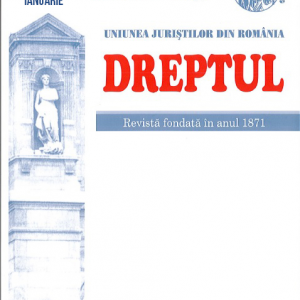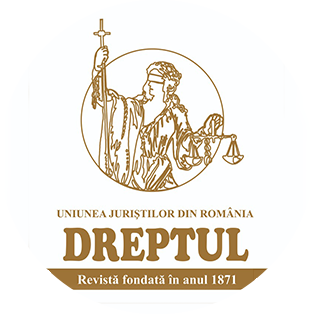-
 The termination of synallagmatic contracts with execution uno ictu represents a common cause in the judicial practice for the annulment of agreements which generates reinstatement of the parties in the former condition, by mutual restitution of the considerations executed by each of them. When the agreement is transferable of property, as consequence of the reinstatement of the parties in the former condition, the asset returns from the acquirer’s to the allienator’s patrimony, the latter having the obligation to return the delivered performance. In case a precautionary measure is established over the acquirer’s patrimony, such as distraint, the asset is frozen, thus being questioned if it can be discharged from the acquirer’s patrimony as consequence of termination. The author estimates that such thing is possible, because such discharge is not voluntary, but forced, as the pros and cons are detailed in the content of this article. Moreover, there is a series of procedural aspects that must be taken into account by the court of law invested with the settlement of such termination request.
The termination of synallagmatic contracts with execution uno ictu represents a common cause in the judicial practice for the annulment of agreements which generates reinstatement of the parties in the former condition, by mutual restitution of the considerations executed by each of them. When the agreement is transferable of property, as consequence of the reinstatement of the parties in the former condition, the asset returns from the acquirer’s to the allienator’s patrimony, the latter having the obligation to return the delivered performance. In case a precautionary measure is established over the acquirer’s patrimony, such as distraint, the asset is frozen, thus being questioned if it can be discharged from the acquirer’s patrimony as consequence of termination. The author estimates that such thing is possible, because such discharge is not voluntary, but forced, as the pros and cons are detailed in the content of this article. Moreover, there is a series of procedural aspects that must be taken into account by the court of law invested with the settlement of such termination request. -
 The present study proposes to analyze the issue of civil guilt, in both of its forms (tort and contractual), judging that the selection of the Civil Code s applicable guidelines (the new Civil Code, in force as of October 1st 2011, as well as the previous Civil Code) from the amalgam of jurisprudential solutions and doctrinaire directions is highly important. The exploration of the Civil Code ks texts brings in discussion a current topic much debated by the contemporary doctrine: disappearance of the unity and harmony of civil liability, which is traditionally founded on guilt. The coexistence of the hypotheses of subjective civil liability with those based on the idea of risk, warranty or equity, within the context of modern society, evidences the increase of the remedial role of civil liability, to the detriment of the sanctionable role. The attention focuses on the victim ks position, to be indemnified, being less important, within the area of civil liability, the sanction applicable to the offender. In the last part of the study, the author expresses her belief that, despite inherent difficulties, undoubtedly, at this moment, the guilt still remains „the eternal lady of tort liability”.
The present study proposes to analyze the issue of civil guilt, in both of its forms (tort and contractual), judging that the selection of the Civil Code s applicable guidelines (the new Civil Code, in force as of October 1st 2011, as well as the previous Civil Code) from the amalgam of jurisprudential solutions and doctrinaire directions is highly important. The exploration of the Civil Code ks texts brings in discussion a current topic much debated by the contemporary doctrine: disappearance of the unity and harmony of civil liability, which is traditionally founded on guilt. The coexistence of the hypotheses of subjective civil liability with those based on the idea of risk, warranty or equity, within the context of modern society, evidences the increase of the remedial role of civil liability, to the detriment of the sanctionable role. The attention focuses on the victim ks position, to be indemnified, being less important, within the area of civil liability, the sanction applicable to the offender. In the last part of the study, the author expresses her belief that, despite inherent difficulties, undoubtedly, at this moment, the guilt still remains „the eternal lady of tort liability”. -
 In this study the authors focus on the necessity of considering the criminal ks degree of social danger in the individualization of penalty, given that the same penalty, identical as type and amount, does not generate the same effects for all criminals on whom it is applied. Concurrently, the authors highlight and conduct an ample research of the elements de facto that are used for the assessment of a criminal ks degree of social danger. Therefore, in order to comprehend the criminal ks degree of social danger, the following should be assessed: health condition (predominantly the psycho-physical condition), the criminal ks biological structure and mental characteristics, the entire social environment, the criminal ks behavior before perpetration of the crime, the criminal and legal circumstances of the criminal (convict, recidivist, prosecuted for other felonies, rehabilitated, amnestied, pardoned etc.), behavior after perpetration of the crime and during the criminal lawsuit, the level of education, as well as age. The following personal circumstances of individualization should also be included: the criminal ks capacity (officer, army enlisted, magistrate, mother etc.), civil status (married, single, widowed etc.), the relationship with the victim (close relative, relative, cohabitant, spouse, friend, enemy etc.) and any other information that might contribute to the individualization of the criminal ks individuality (for instance, lifestyle, reputation, social merits etc.).
In this study the authors focus on the necessity of considering the criminal ks degree of social danger in the individualization of penalty, given that the same penalty, identical as type and amount, does not generate the same effects for all criminals on whom it is applied. Concurrently, the authors highlight and conduct an ample research of the elements de facto that are used for the assessment of a criminal ks degree of social danger. Therefore, in order to comprehend the criminal ks degree of social danger, the following should be assessed: health condition (predominantly the psycho-physical condition), the criminal ks biological structure and mental characteristics, the entire social environment, the criminal ks behavior before perpetration of the crime, the criminal and legal circumstances of the criminal (convict, recidivist, prosecuted for other felonies, rehabilitated, amnestied, pardoned etc.), behavior after perpetration of the crime and during the criminal lawsuit, the level of education, as well as age. The following personal circumstances of individualization should also be included: the criminal ks capacity (officer, army enlisted, magistrate, mother etc.), civil status (married, single, widowed etc.), the relationship with the victim (close relative, relative, cohabitant, spouse, friend, enemy etc.) and any other information that might contribute to the individualization of the criminal ks individuality (for instance, lifestyle, reputation, social merits etc.). -
 The new Civil Code has regulated, for the first time in our legislation, the periodic property. This new legal form of the right of property has been established as a forced joint ownership, although its owners do not exercise the prerogatives of the property right concurrently and together, but successively and repetitively. This study criticizes some provisions which govern the periodic property and sets out the arguments supporting the idea that this forced property cannot be considered joint ownership of property, as the Civil Code names it.
The new Civil Code has regulated, for the first time in our legislation, the periodic property. This new legal form of the right of property has been established as a forced joint ownership, although its owners do not exercise the prerogatives of the property right concurrently and together, but successively and repetitively. This study criticizes some provisions which govern the periodic property and sets out the arguments supporting the idea that this forced property cannot be considered joint ownership of property, as the Civil Code names it.
